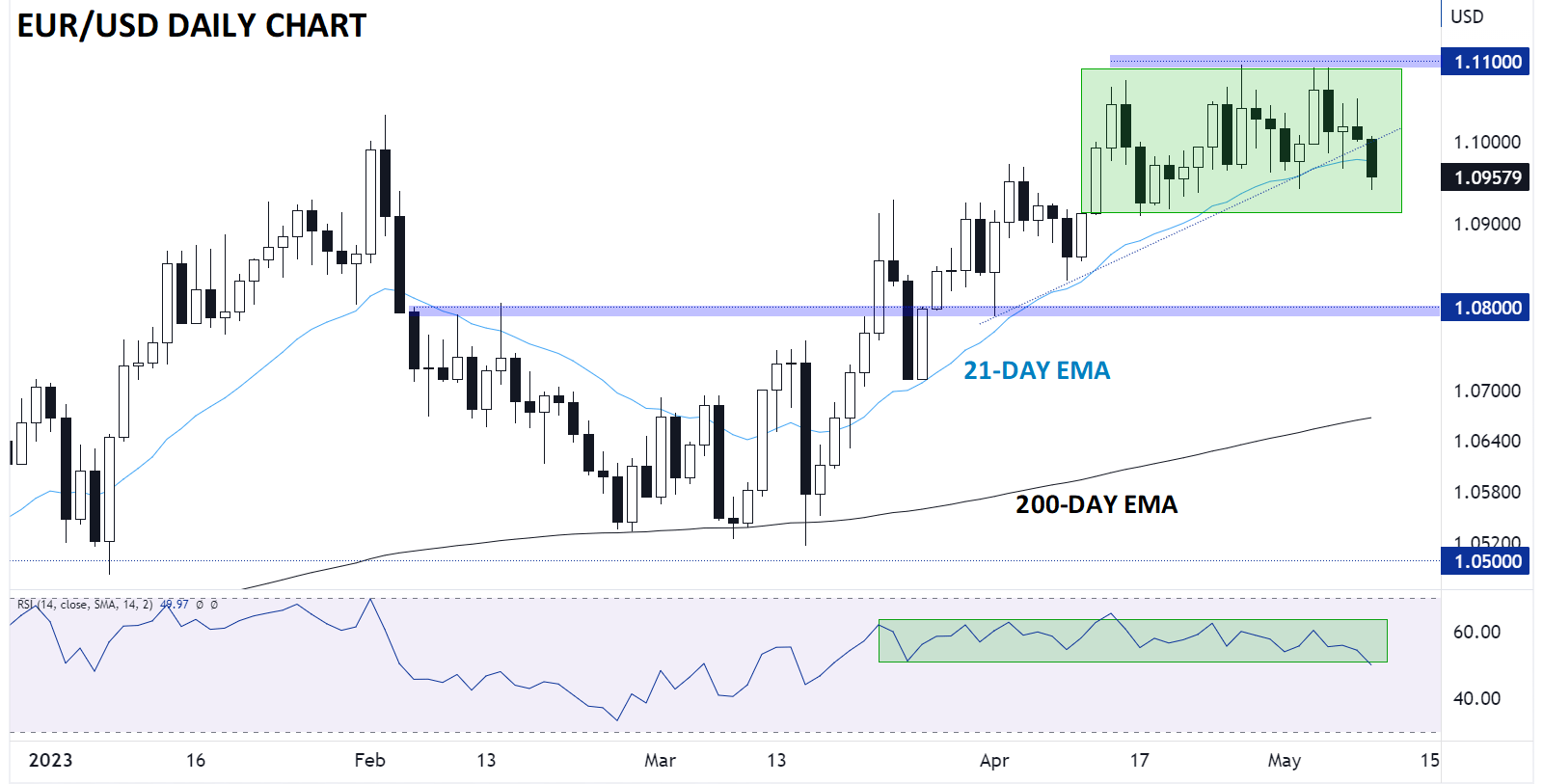
US dollar and CPI takeaways
- US CPI for April is scheduled for release Wednesday morning, but with the Fed likely on hold, market movements may be limited.
- The Cleveland Fed’s Inflation Nowcast points to potential upside risk for the release.
- EUR/USD has lost its bullish momentum and a break below 1.0900 would point to a deeper retracement from here.
When is the US CPI report?
The Bureau of Labor Statistics (BLS) will release the April Consumer Price Index reading at 8:30 ET (12:30 GMT) on Wednesday, May 10.
What are the US CPI report expectations?
Traders and economists are expecting the headline CPI to rise 0.4% m/m (5.0% y/y) and the so-called “Core” CPI (ex-energy and -food) to rise 0.3% m/m (5.5% y/y).
US CPI preview
Over the last few quarters, the US CPI report has been THE report to watch for big market moves. That’s because inflation was the most important factor driving Federal Reserve decisions (or more accurately, how much the central bank would be raising interest rates at its next meeting).
Now though, with Fed Chairman Powell heavily hinting that the central bank would finally pause for at least a couple months to see how the economic data develops, this month’s CPI report may not be as big of a market mover as recent iterations.
Indeed, the implied volatility in major stock market indices like the S&P 500 and in US dollar crosses is pricing in about half the volatility as recent CPI releases, a tangible sign that traders expect small moves.
Looking to leading indicators, the Cleveland Fed’s widely-watched Inflation Nowcast suggests potential upside risk to the release:

Source: Cleveland Fed
In terms of specific things to watch for this month’s report, the impact of shelter will be key. The Fed has repeatedly noted that it is focused on inflation in core services ex-shelter, as the housing market tends to be a lagging indicator. This measure is expected to rise 0.2% m/m, whereas shelter is expected to increase by another 0.6% m/m.
Regardless, the market is convinced that the Fed will leave rates unchanged at its next meeting, so the barrier for any sort of immediate policy impact from this month’s report is high, likely limiting the scope for big market moves as traders quickly refocus on US regional banks and the debt ceiling drama.
US dollar technical analysis– EUR/USD Daily Chart
It’s had a strong start to the year, but EUR/USD now looks like it may be losing steam. The world’s most widely-traded currency pair has now failed to break above 1.1100 on multiple attempts in the past three weeks, and rates are rolling over today to break below the near-term bullish trend line and rising 21-day EMA.
At the same time, the pair’s 14-day RSI indicator is on the verge of breaking down to its lowest level in two months, signaling fading bullish momentum. EUR/USD’s 4-week low sits near 1.0900, and if that level gives way in the wake of the CPI report, a deeper drop toward previous-resistance-turned-support at 1.0800 may be next.

Source: StoneX, TradingView
Meanwhile, even if EUR/USD sees a bounce through the middle of the week, bulls may be hesitant to buy into the move unless and until the pair can break definitively above 1.1100 resistance.
-- Written by Matt Weller, Global Head of Research
How to trade with City Index
You can trade with City Index by following these four easy steps:
-
Open an account, or log in if you’re already a customer
• Open an account in the UK
• Open an account in Australia
• Open an account in Singapore
- Search for the market you want to trade in our award-winning platform
- Choose your position and size, and your stop and limit levels
- Place the trade





